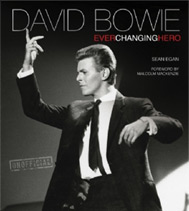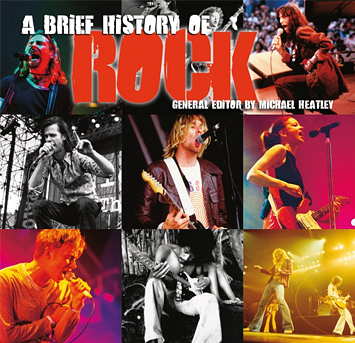(Vocals, songwriter, 1908–89) An early West Coast mover and shaker, Stuart Hamblin was the first cowboy singer to be heard on Los Angeles radio, appearing on KFI as ‘Cowboy Joe’. After a brief spell with the Beverly Hill Billies, he began a 20-year run on his own Lucky Stars show (KFWB) in 1932. Two years later ...
(Vocals, guitar, mandolin, songwriter, b. 1958) Aged only 13, Mississippi-born Stuart joined bluegrass legend Lester Flatt and Nashville Grass for six years until Flatt’s death. After this he enjoyed a six-year spell in The Johnny Cash Show. His first significant solo album was Busy Bee Café (1982). The title track of Hillbilly Rock (1990) largely sums ...
(Vocals, comedian, record producer, bandleader, 1917–98) Native Californian Cliffie Stone – the son of country comedian Herman the Hermit (a.k.a. Herman Snyder) – was a West Coast, one-man industry during the 1940s. Hard to pinpoint any particular activity, he began to get his name known on Stuart Hamblin’s Covered Wagon Jamboree before establishing ...
In the Bakersfield family tree, the likes of Bill Woods and Wynn Stewart set the stage, Buck Owens put the town on the map, and Merle Haggard was the heir apparent. ‘The Hag’, as he is often known, also had the distinction of actually being born in Bakersfield, on 6 April 1937. His parents, James ...
Like the USA itself, country music in California was built upon migrant forces, in relation to both musicians and audiences. Unlike Nashville, whose growth was mainly dependent upon local musicians, the Golden State scarcely produced any homegrown talent but, rather, was dependent upon the influx of migrant workers from other states. The greater number of ...
The word ‘Baroque’ is derived from the Portuguese barrocco, a term for a misshapen pearl, and it was still with this sense of something twisted that it was first applied – to the period between about 1600 and 1750 – in the nineteenth century. In 1768, Jean-Jacques Rousseau wrote: ‘a Baroque music is that in which the harmony ...
The late Baroque era (1700–50) was a time of major political change throughout Europe, involving a shift in the balance of power between sovereign states. Across the continent it was a period of almost continuous warfare, the effects of which were later felt in other parts of the world as a result of conflicting ambitions among the various trading ...
By the beginning of the eighteenth century, opera was established in some form in most major European centres. The basic types of serious and comic opera in both Italian and French traditions shared similarities, although the content and style of an operatic entertainment could vary according to whether it was intended to flatter a private patron, resound with ...
An important aspect of Romanticism was its focus on individual feeling and expression, in contrast to the universal strictures of classical form and style. This led inevitably to a concept of the artist as a misunderstood genius, battling against the world. The second generation of English Romantic poets, including Percy Bysshe Shelley and Lord Byron, contributed significantly ...
More sophisticated diplomatic relations between states in the late Baroque era resulted in a time of relative peace – for a short period at least – during which the arts flourished. As in the Renaissance and early Baroque eras, writers, artists and musicians turned to the classical antiquity of Greece and Rome for their standards and their inspiration. At ...
In the first part of the seventeenth century, two traditions of absolute power were struggling to maintain their hold. In England, after the death of Elizabeth I in 1603, the Stuart dynasty fought for survival for 40 years. Then the dream crumbled in the face of civil war and the execution of the king, Charles I, ...
(Vocal/instrumental group, 1977–82) The charismatic Adam Ant (b. Stuart Goddard) was a prominent figure in the boutiques and clubs of the punk scene, appearing in Derek Jarman’s film Jubilee, and releasing Dirk Wears White Sox in 1979. After his backing band became Bow Wow Wow, he started from scratch, gaining huge fame with his follow-up – ...
(Vocal/instrumental group, 1972–82, 1989–present) The blue-eyed soul of Scots Alan Gorrie (vocals, bass), Malcolm Duncan (saxophone), Owen McIntyre (vocals, guitar), Hamish Stuart (vocals, guitar), Roger Ball (keyboards) and Robbie McIntosh (drums) topped the US charts in 1975 with the album AWB and single ‘Pick Up The Pieces’. After dabbling in disco with ‘Let’s Go Round Again’, ...
(Vocal/instrumental group, 1981–2001) Stuart Adamson began with Scottish punk band The Skids. His Caledonian heritage came to the fore with Big Country, as he employed guitar gizmos to create a choral ‘bagpipe’ sound. The epic, yearning songs of debut album The Crossing (1983) played well in America. The follow-up, the more political Steeltown (1984), was a UK ...
Billie Holiday was entirely untrained as a singer, but drew on the example of popular recording artists such as Bessie Smith and Louis Armstrong in developing her musical approach. She was able to make much of poor songs as well as great ones. Her phrasing, intonation, attention to the weight and nuance of lyrics, and her lightly ...
AUTHORITATIVE
An extensive music information resource, bringing together the talents and expertise of a wide range of editors and musicologists, including Stanley Sadie, Charles Wilson, Paul Du Noyer, Tony Byworth, Bob Allen, Howard Mandel, Cliff Douse, William Schafer, John Wilson...
CURATED
Classical, Rock, Blues, Jazz, Country and more. Flame Tree has been making encyclopaedias and guides about music for over 20 years. Now Flame Tree Pro brings together a huge canon of carefully curated information on genres, styles, artists and instruments. It's a perfect tool for study, and entertaining too, a great companion to our music books.

David Bowie
Fantastic new, unofficial biography covers
his life, music, art and movies, with a
sweep of incredible photographs.


